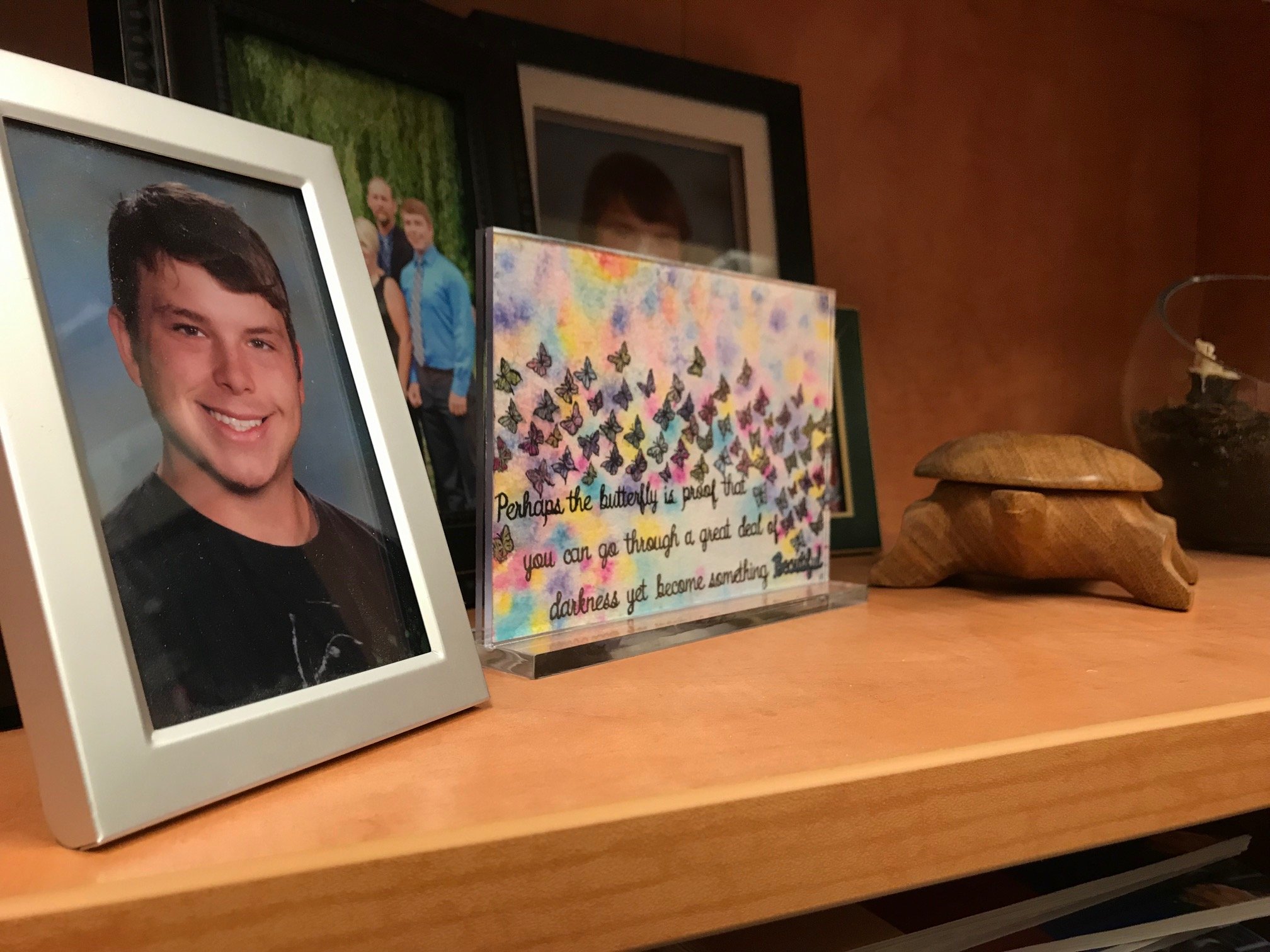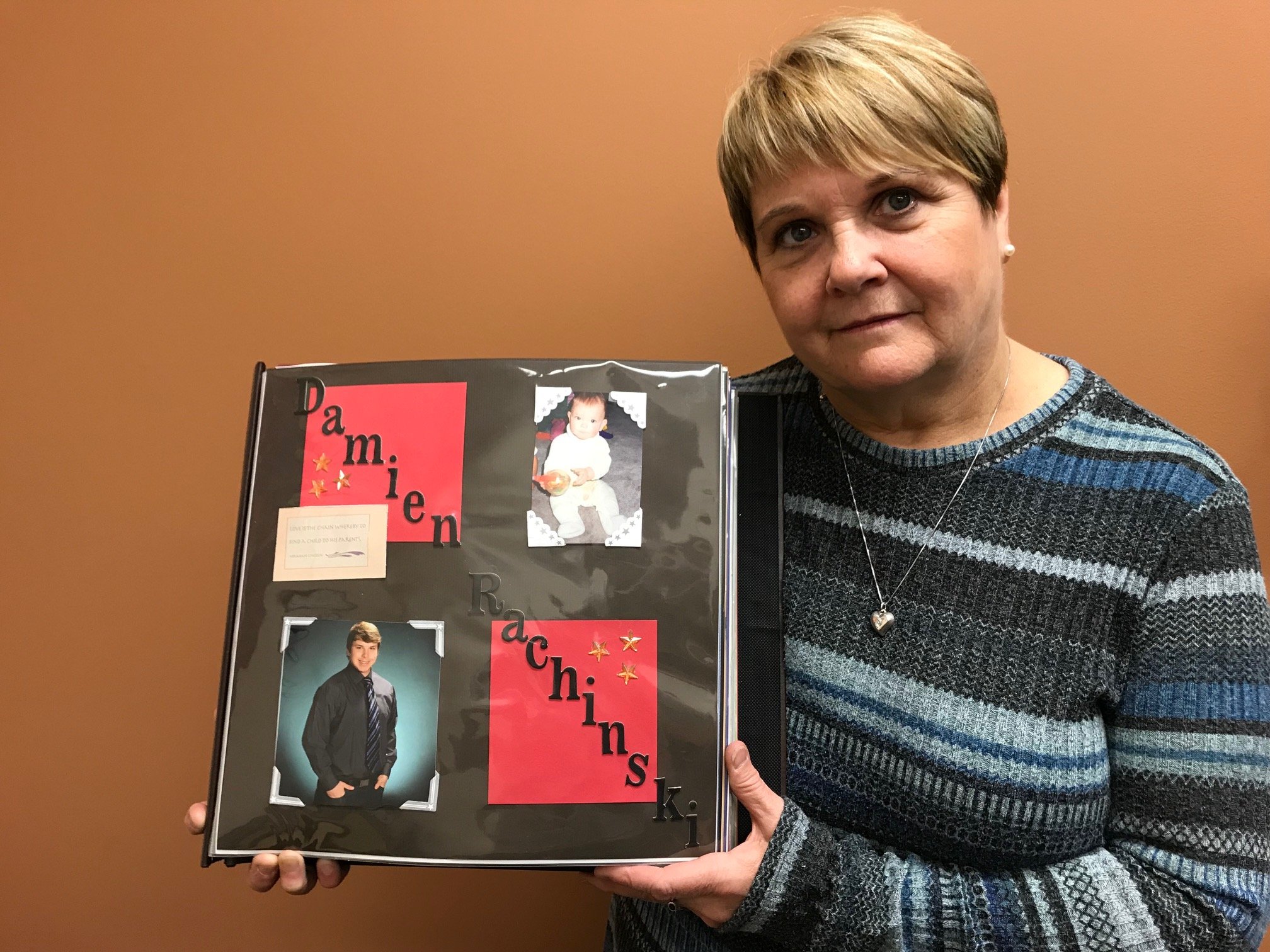Grieving death by suicide
Support groups provide reassurance and purpose

May 7, 2019
By Brenton Driedger, Social Media and Storytelling Advisor, Covenant Health
Janice Rachinski will remember Dec. 10, 2014, every day for the rest of her life. It’s the day her son died by suicide.
“I was at work that day, and I came home and I found my son,” says Janice, a Recreational Therapist with Covenant Health’s Community Geriatric Psychiatry Program. “My life was shattered.”
Janice says Damien, 18, wrestled with depression and addiction, and the family did their best to support him.
“Unfortunately, it took his life. He couldn’t work through it,” says Janice. “His illness overtook his ability to see any future, to see any hope.”
Amidst the shock of losing their son, whom they adopted at the age of two, Janice and her husband acted on what she calls the best advice they ever got: they joined a suicide support group. Janice calls that decision a “lifesaver.” The group was started two decades earlier by a woman who lost her daughter to suicide. The Rachinskis go every month, along with roughly two dozen other people, although Janice says attendance increases around Christmas.
The support group helped reassure them that they would get through their grief.
“It gets easier. You never forget it. There’s always a void in your life. There’s always that little part of you that is missing, but it gets easier to laugh. It gets easier to smile.”

Janice keeps photos of her son Damien on a shelf next to her desk.
Support makes a difference
Finding a support group is important when grieving the loss of a loved one, says Scott Aylwin, Senior Director, Addiction and Mental Health. Those left behind often blame themselves, especially when someone dies by suicide. A supportive community can help, including reminding you that you’re not to blame for what happened.
“When you’re in it, you have a hard time convincing yourself of it. So it’s very reassuring to hear that from somebody else,” says Scott.
People find that support in various ways, by being involved in anything from church to volunteerism to sports.
“Everybody will gravitate to something a little bit different, but that underlying mechanism that appears to be healing for everybody is connection to other people and a supportive environment,” says Scott. “You have to find the ones that work for you.”
After Damien’s death, Janice says, her colleagues were very supportive. Many of them attended the funeral and they took training to learn how to support her when she returned to work. She also received counselling and spent time researching and implementing practices that would help her emotionally, physically and spiritually to process what happened, such as reading and writing in a journal.
From Darkness Into Light
Another one of those practices has been her involvement in the Darkness Into Light walk. The walk started in Ireland 10 years ago to raise money and awareness for suicide prevention and is now held in 19 countries. Another member of Janice’s support group spearheaded the effort to bring Darkness Into Light to Edmonton, and others in the group—including Janice—joined the organizing committee.

The Edmonton walk, held in the river valley, begins in the darkness at 4:15 a.m., with participants crossing the finish line at Victoria Park just after sunrise, a fitting metaphor for Janice’s journey.
“We want people to realize when you’re feeling so dark that there is light out there at the end of the tunnel, to not give up. There’s hope.”
There were 188 people registered in the inaugural 2018 walk, and Janice hopes that number will double in the walk’s second year. Many of the participants, including Scott, are walking in memory of someone close to them who died by suicide. In recent years, a colleague who worked in mental health lost her son to suicide, and a young woman who was on staff in his program died by suicide.
For Janice, the walk helps with healing and keeping her son’s memory alive.
“You never forget them. That was another big thing, you worry, ‘Am I going to remember them? Will anybody else remember them? Will they stop mattering?’ This keeps that going.”
In more than four years of participating in a support group, Janice says she’s shared stories and shed tears with children and seniors, moms and dads, firefighters, professionals and members of the military.
“Mental illness doesn’t pick and choose who it’s going to hit. Neither does suicide.”
Scott says there’s still a stigma associated with suicide and mental illness, but things are starting to change.
“The very fact that we’re having walks like Darkness Into Light speaks volumes to where we are,” he says. “We’ve come a long way, but we have a long way to go.”
Suicide in Canada
- An average of 10 people die by suicide each day in Canada.
- More than 90 per cent of people who die by suicide were living with a mental health problem or illness.
- Men aged 45 to 69 have the highest rate of suicide.
- Females are three times more likely to attempt to end their lives. Males are three times more likely than females to die by suicide.
- Suicide is the second leading cause of death for children to young adults (10 to 29 years).
- The suicide rate for Indigenous youth is five to 11 times higher than the rate for non-Indigenous youth.
Sources: Public Health Agency of Canada, Canadian Association for Suicide Prevention, Government of Canada
If you or someone you know needs help, there are resources available 24/7. Call the Mental Health Help Line at 1-877-303-2642, call Health Link at 811 or call 211 Alberta.